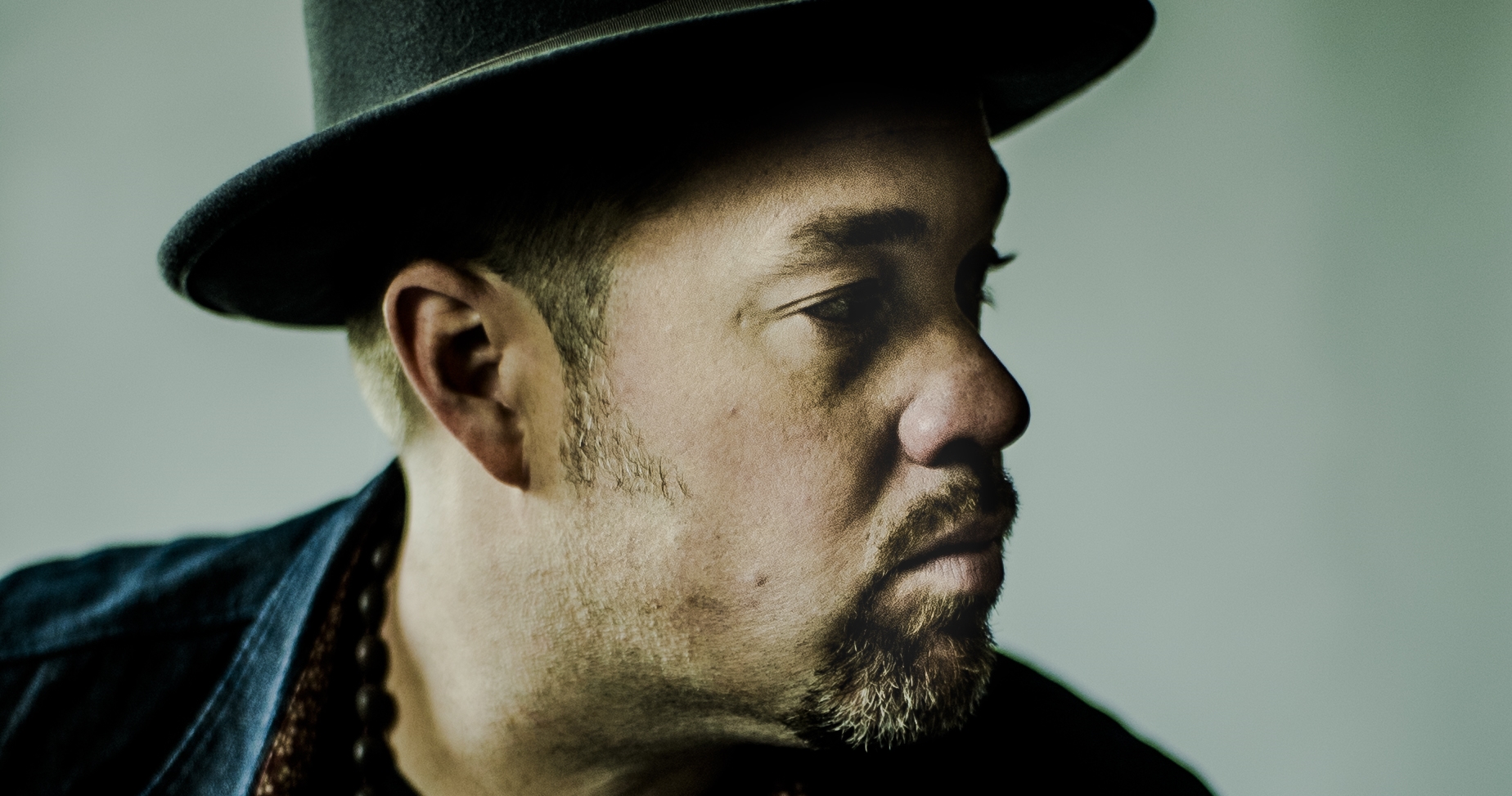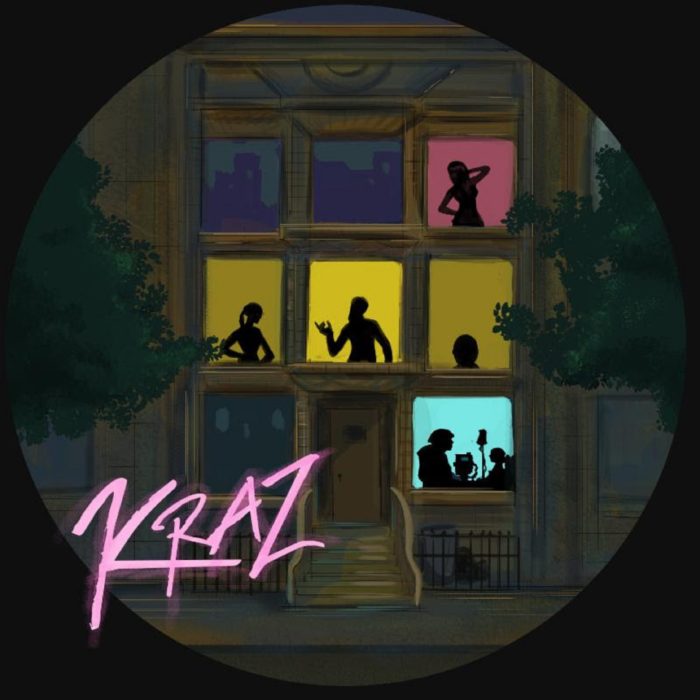The Core: Eric Krasno on ‘Telescope’

photo by Jay Sansone
The Soulive guitarist and two-time Grammy winner steps out under a new name for his Brooklyn swan song.
Distinctly New York Characters
I knew my next album needed to be different and, to do that, I needed to write from some different perspectives. So I started thinking about all these people who lived in a New York apartment building. I had the same Brooklyn apartment for over 15 years and saw the same people every day. I would look out my third-floor window and, not in a creepy way, became a voyeur. And, even though I didn’t actually know some of these people or even know their names, I watched their kids grow and I watched their friends come and go. I’d think about their stories, and I would make up what I didn’t know in my head. That’s how I started creating the characters on Telescope.
I wrote the album, for the most part, in order. These characters are very distinctly New York to me. They are amalgamations of different people I’ve known over the years and stories that I’ve either experienced or heard about. Gina is on the third floor. She’s a girl from the Midwest who moves to New York to be a model/actress and gets pulled into the nightlife. She becomes a bartender and New York socialite. On the next level of the apartment is a couple of artists who move to New York to become great at their art—he’s a musician, she’s an artist. They fall in love, have a child. Now, they are navigating how to be artists while raising a child in New York City. On the next floor
is the guy who inherited the building—he grew up in the neighborhood, spent time in jail and watched gentrification take over. Now, the culture is totally different. He’s trying to assimilate to this new neighborhood. Bodegas have become juice bars and cafés.
New Name, Who Dis?
I’ve always enjoyed writing for and producing other artists. That’s another reason I changed the name of the project to KRAZ—I wanted it to be something fresh that people could look at in a new light. And, sonically, it’s very different as well. It has a
more modern sound, pulling together all the different genres I’ve worked with—hip-hop, pop, psychedelia. There is also an animation piece created by Josh Clark from Tea Leaf Green. I told [JRAD/ Ghost Light guitarist] Tommy Hamilton that I was looking for someone to create an image of this world. He suggested Josh, but it took me a year to figure out that he was the guy from Tea Leaf Green. We were working on the project and he said, “I think we already met at High Sierra—I was in a band with Reed Mathis.”
I also love how concise the KRAZ project is because, when I am writing, I can go, “What’s happening next in the story?” The Eric Krasno Band is more wide open—I can do songs from all of my albums, including the KRAZ stuff. I can do vocal tunes, instrumentals or Dead songs. Though, at some point, I would like to do a KRAZ show and incorporate all the animation.
Goin’ Out West
As I was working on the album, I decided to make the move to North Hollywood, which was interesting timing given the subject matter. It’s complicated to balance [my roles as a producer, performer and sideman] and that was part of the impetus for moving.
But there were a number of other reasons—more space, better weather, having a pool, having my brother Jeff and his family out there. He started a company called Wanderlust and they are building this compound in Topanga for yoga and wellness retreats. He and I have always been close but, in the last few years, we decided it was time to work together up there and have these gatherings. And most of the records I have been producing are being made in LA. I’ve also always dreamed of having a studio at my house. But the downside is I’ve been on a plane much more since I’ve moved because I still come back all the time for gigs. In fact, I’m probably in New York just as much as before—I just stay at a hotel.
I’ve convinced myself that I’m finding my niche as a producer. One of my saving graces is that I already spent a few months in LA around 2005—when I considered producing to be my main thing. It was hard for me. I worked with Interscope Records, and Adam Deitch and I had our production partnership. But it was difficult to connect to some of the artists. I had just produced a song for a big 50 Cent album, so I was getting a lot of calls to work with these young pop artists. I completely respect that world, but the lyrical content was not what I liked. I was making music for money and I want to make music that says something important. It doesn’t always have to be political, but I have to at least be in line with what the vision is, and I felt some separation there.
It’s funny—one of the opportunities I had back then was to work with Aftermath and Dr. Dre’s camp. I was waiting on them to bring me into the studio, and I ended up having to fly to a Soulive show the day they wanted me to come in. So I told them I couldn’t make it. They didn’t understand; they didn’t know Soulive. It was a big show for me—sold out—and they were like, “Can’t you just move it?” And I said, “Nope, no way.”
It made me realize that they didn’t really value me the way the fans and the bands that I’m linked to do. So it took me a while to get back out there and produce again. Also, doing an entire album is a huge undertaking. One or two songs is easier, but it’s a labor of love because it’s hard to make money doing that. But, I’m working with artists I really believe in and that’s the most important thing. That’s true in terms of my career as a whole. I’ve whittled it down so that I have the ability to do the things I love. I was spreading myself thin at times and, now, I’m zoning in on these different projects. Soulive is doing well and, when we come together, I have a blast. I get to play with Phil [Lesh]; I get to make studio records with artists I like; I get to do some field work and discover new artists I can work with.

Phil’s Friend
My first actual concert, as a child with my dad and my brother, was Hot Tuna at The Capitol Theatre in Port Chester, N.Y. My dad was a big music guy and my brother was a musician—he brought me to Grateful Dead concerts when I was 12-13, so I saw the Dead in the late-‘80s and ‘90s and I saw Phish in their really early era. I used to collect tapes and the music was ingrained in me. But as I became a musician, I went in a different direction. I got into Jimi Hendrix and Stevie Ray Vaughan and, then, jazz, jazz-funk and Herbie Hancock. That other music was still there all the while, but for a long time I wasn’t really aware of what was going on. Soulive did open for Phil, but it wasn’t until [Relix publisher and concert promoter] Pete Shapiro brought me in to play a show with Phil in Central Park in 2013 that he started inviting me to do Phil and Friends. That’s when I dove back in. At the time, I was doing a lot of songwriting so it felt like the perfect moment for a deep-dive back into the Dead. It was also a functional deep-dive because Phil asked me to learn 80 songs and I started listening to all these different versions.
The guys in Lettuce and Soulive weren’t into the Dead, but I started going back through the rabbit hole with my brother, and it has really affected my writing. Around the same time, I also started the Eric Krasno Band and was digging into the Dead with Danny Mayer. I really love Robert Hunter and the Hunter-Garcia catalog.
Small Worlds
I was in the Bay Area playing with Phil at Terrapin Crossroads in June. My flight got in early and I thought, “Shit, maybe I should go to Shoreline [to see Dead & Company]? I met up with some friends there, like Oteil [Burbridge], and Marc Brownstein goes, “You should come to the Jambase 20th anniversary party.” I had no idea it was happening and, when I showed up, I saw that The Slip were playing [a reunion show]. I hadn’t seen those guys in about 10 years, but Brad [Barr] and I have known each other since we were 13. We went to this guitar summer workshop; I met Andrew then too, and we stayed friends. When The Slip got going, I went to their shows to hang and sit in and, when Soulive first started, we were doing a lot of the same festivals. I love Brad—he’s one of my favorite guitarists.
Soulive’s Next Steps
The [most recent] Soulive record came out right around when Neal [Evans] got the gig with Jack White and I dove into doing all my things. Our initial plan was to get back into the studio every few months, but now I’m in LA. We will do it eventually because we love this “cinematics” concept; it’s just a matter of when. Going forward, we’ll do more residencies in different cities. Neal doesn’t want to go out on a big tour; none of us want to do the 80-day tour thing. I enjoy being in New York for a week or Chicago for a couple of days—it’s no fun being on a bus every day anymore. It’s also been cool to have all these people involved in something like Bowlive—I want to compile a list of everyone that we’ve had over the years. We had Allen Stone when he was first starting out, and we’ve had our mentors sit in. I was at dinner with [John] Scofield the other night. When I was growing up, this guy was my hero. That whole thing is weird—we’ve been friends for 20 years and, now, I am the age he was when we met.
This article originally appears in the September 2019 issue of Relix. For more features, interviews, album reviews and more, subscribe here.




















